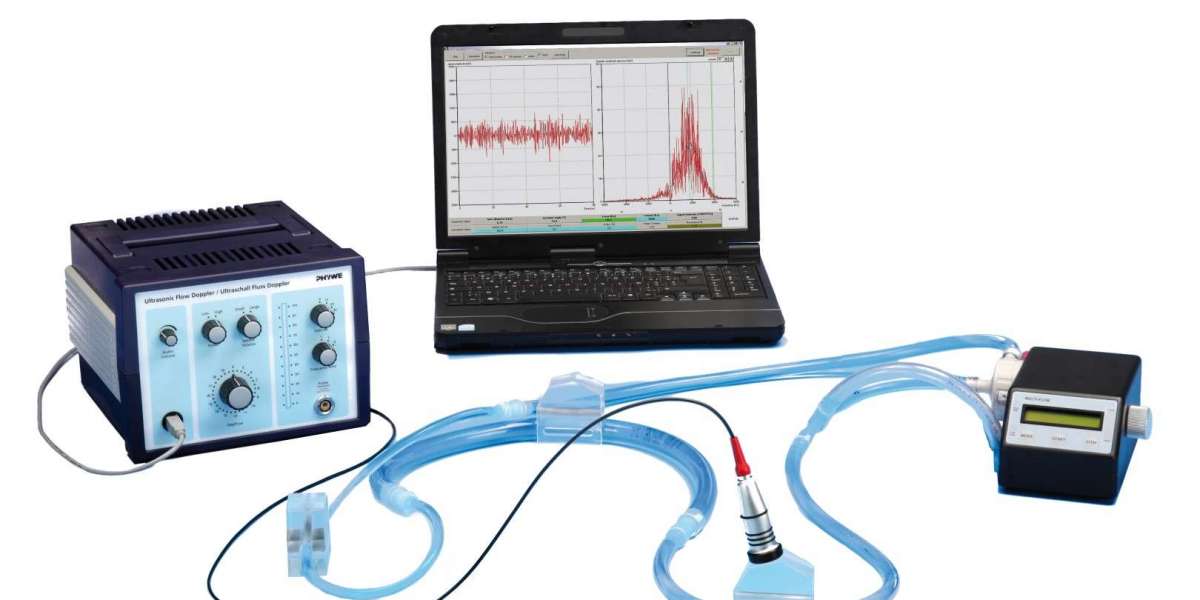When it comes to diagnostic imaging, Doppler ultrasound stands out as a powerful tool used in various medical fields. This technology provides detailed insights into blood flow and can be crucial for diagnosing a range of conditions. In this comprehensive guide, we’ll explore what Doppler ultrasound is, how it works, its benefits, and what you can expect during the procedure.
What is Doppler Ultrasound?
Defining Doppler Ultrasound
Doppler ultrasound is a specialized type of ultrasound imaging that uses sound waves to measure the flow of blood through vessels and organs. It works on the principle of the Doppler effect, which refers to the change in frequency of waves relative to an observer moving towards or away from the source of the waves. In medical applications, this means it can detect and visualize the speed and direction of blood flow.
How It Differs from Standard Ultrasound
While standard ultrasound primarily focuses on creating images of organs and tissues using sound waves, Doppler ultrasound adds an extra layer of detail by assessing blood flow. This capability allows healthcare providers to evaluate the efficiency of the circulatory system, which is crucial for diagnosing various conditions.
Benefits of Doppler Ultrasound
1. Non-Invasive and Safe
One of the most significant benefits of Doppler ultrasound is its non-invasive nature. The procedure does not require any incisions or injections, making it a safe option for patients. Moreover, it does not involve ionizing radiation, unlike X-rays or CT scans, further enhancing its safety profile.
2. Detailed Blood Flow Analysis
Doppler ultrasound provides detailed information about blood flow, including velocity and direction. This level of detail helps in diagnosing conditions such as blockages, blood clots, and issues with blood vessel function. For instance, it can reveal how well blood is flowing to and from the heart or how effectively it circulates through the limbs.
3. Real-Time Imaging
The technology offers real-time imaging, which allows healthcare providers to observe blood flow dynamics as they occur. This immediacy can be especially useful in emergency situations or during surgical procedures where live feedback is crucial for decision-making.
4. Versatility in Applications
Doppler ultrasound finds applications in a variety of medical fields. It is commonly used in cardiology to assess heart conditions, in obstetrics to monitor fetal well-being, and in vascular medicine to evaluate blood vessel health. This versatility makes it an essential tool in comprehensive diagnostic evaluations.
Common Uses of Doppler Ultrasound
1. Cardiovascular Assessment
In cardiology, Doppler ultrasound helps evaluate the heart’s function and blood flow. It can detect issues such as heart valve abnormalities, congenital heart defects, and problems with blood flow within the heart. For example, it can identify if blood flows backward through a valve, a condition known as regurgitation.
2. Monitoring Fetal Health
During pregnancy, Doppler ultrasound plays a critical role in monitoring the health of the fetus. It assesses the blood flow in the umbilical cord and the baby’s organs, providing insights into fetal well-being and detecting potential issues such as fetal growth restriction.
3. Vascular Studies
In vascular medicine, Doppler ultrasound evaluates blood flow in veins and arteries. It is particularly useful for detecting conditions like deep vein thrombosis (DVT), peripheral artery disease (PAD), and carotid artery disease. By examining blood flow patterns, it helps in diagnosing and managing these conditions effectively.
4. Post-Surgical Monitoring
After certain surgeries, Doppler ultrasound is used to monitor the healing process and ensure that blood flow to the affected area is adequate. This application is vital for detecting potential complications, such as blood clots or issues with grafts.
What to Expect During a Doppler Ultrasound Procedure
1. Preparation
Generally, no special preparation is needed before a Doppler ultrasound. You might be asked to wear comfortable clothing and remove any jewelry from the area being examined. In some cases, if the examination is for a specific body part, you might need to follow specific instructions from your healthcare provider.
2. The Procedure
During the procedure, you’ll lie down on an examination table. The technician will apply a special gel to the area being examined. This gel helps the ultrasound probe make secure contact with your skin and improves the quality of the images. The technician will then move the probe over the area, sending and receiving sound waves.
3. What You’ll Feel
Most patients find the Doppler ultrasound procedure to be painless and comfortable. You might experience some mild pressure or discomfort as the technician moves the probe, but it should not be painful. The gel used might feel cool initially but is generally well-tolerated.
4. After the Procedure
Once the procedure is complete, you can resume your normal activities immediately. There are no special aftercare instructions, and you can expect to receive the results from your healthcare provider in a timely manner, depending on the complexity of the case.
Tips for a Smooth Doppler Ultrasound Experience
1. Communicate with Your Provider
If you have any concerns or questions about the Doppler ultrasound, don’t hesitate to discuss them with your healthcare provider. Understanding the procedure and its purpose can help alleviate any anxiety and ensure that you are prepared.
2. Follow Instructions Carefully
While specific preparation for a Doppler ultrasound is minimal, following any instructions provided by your healthcare provider can help ensure that the procedure goes smoothly and that the results are accurate.
3. Relax During the Procedure
Try to remain relaxed during the procedure. Tension or discomfort can affect the quality of the images. Taking deep breaths and staying calm can make the process more comfortable and efficient.
Conclusion
Doppler ultrasound is a valuable diagnostic tool that provides detailed insights into blood flow and vascular health. Its non-invasive nature, real-time imaging, and versatility make it a preferred choice for a wide range of medical evaluations. Whether assessing cardiovascular health, monitoring fetal development, or evaluating vascular conditions, Doppler ultrasound plays a crucial role in modern medicine.
By understanding what Doppler ultrasound entails and what to expect, you can approach the procedure with confidence. If you have any concerns or need further information, consult with your healthcare provider to ensure that you get the most out of this diagnostic tool.
Embrace the benefits of Doppler ultrasound and ensure that your health remains a top priority. This technology offers a window into your circulatory system, providing essential information for diagnosis and treatment.






